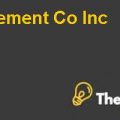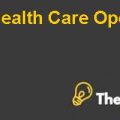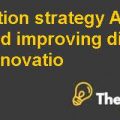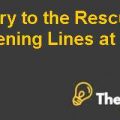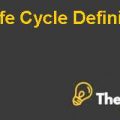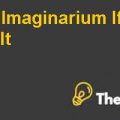
Major key drivers for both types of planes
In an airline industry, a company’s growth strongly depends on the customer satisfaction. In order to sustain in the complex market and to enhance the customer satisfaction; JetBlue agreed to launch E190 to its fleet. This gave JetBlue an opportunity to attract new customers through its improved interior design and other new market competitive features.
Different measurement techniques can be used in order to measure the profitability of the planes. Firstly, the organization needed to develop different cost and revenue centre for both the planes, so the organization had a rough idea of how much revenue a particular flight generated and how much cost the different flights incurred. Assigning different cost centers also benefited the whole organization in measuring the cost and taking initial steps ie: increase selling price of a particular flight.
There are 150 seats in A320 whereas E190 has the capacity of only 100 seats, so the E190 has higher cost available per seat mile (CASM) as comapred to A320 because there are low number of seats to spread against cost whereas on the other hand E190 would represent a higher revenue available per seat (RASM) because there are limited seated to distribute the organization’s review.
The information available in the case is not bifurcate to reflect an attractive comparison but some operational ratios have been calculated in Appendices 2 in order to reflect the performance of the overall organization. The operating cost per seat mile represented 7.8 cents in 2006 whereas it was only 6.97 in 2005; it had substantially increased, this was due to the increased fuel cost, the fuel cost approximately reflected 33.63% of the total operating cost in 2006 whereas this figure was only 29.52% in 2005. However, an increase in operating cost substantially hit the performance of the organization which resulted in net loss for two consecutive years.
The revenue per average seat mile (RASM) for 2005 represented 7.8 cents whereas for 2006 it represented 8.26 cents, this represented that the company had increased its prices in order to cover cost and to enjoy profits but the organization was required to increase its sales price substantially because the break-even load factor was 81.4% whereas the passenger utilization factor was 81.6%, which was substantially low, this represented that the company retained only 0.2% to pay its interest and tax.
The interior design of E190 was not only the single feature that attracted passengers but the seating arrangements also delivered the level of comfort to the passengers which attracted new customers. The seat configuration of A320 represents 25 rows with 3-and-3 layout whereas the seat configuration of E190 represents 25 rows with 2-and-2 layout. The seat width of E190 is far wider which represents 18.25 inches whereas the seat width of A320 represents 17.8 inches, which provides a comfort zone to its passengers, especially to the travelers who travel through long connecting flights.
One of the most important feature offered by the JetBlue to their wide range of customers were that they launched connecting flights at focused cities, which succeeded to attract the commercial passengers who continuously traveled through long routes for business purpose. The strong co-ordination between both the crafts improved the utilization of the airport, increased productivity and reduced downtime for crew members which resulted in synergies and enabled the JetBlue to achieve daily utilization of 10 to 11 hours per day, which was significantly higher than average utilization of 8 hours per day on other regional jets.
The acquisition cost of A320 represented $50 to $60 million; whereas the acquisition cost of E190 represented $30 to $40 million, which was substantially low, this could benefit the organization to improve its return on investment. The seating capacity of E190 is lower than A320, therefore it is very essential for the organization to achieve maximum capacity because the airline was already operating under low-cost strategy and if the airline failed to achieve the maximum capacity then it would raise issue for its survival because the industry was already suffering from heavy fixed cost and under utilization of the seats would threaten the operating results of the JetBlue significantly.
The A320 is a bigger air craft, which is used for larger destinations whereas the E190 is smaller craft having seat capacity of only 100 in number which is mainly used for smaller destinations; this was a tremendous opportunity for the JetBlue to cover its fixed cost by increasing its customer base and maximum utilization. The company had achieved its target of increased productivity and reduced downtime and the average daily utilization of around 10 to 11 hours whereas the average utilization of other players in the market represented an average of 8 hours per day...................................
This is just a sample partial case solution. Please place the order on the website to order your own originally done case solution.


